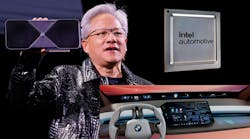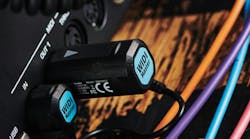Overcome Message Collisions in Satellite Automatic ID Systems (.PDF Download)
Ocean-going ships rely on various types of signals from space satellites for guidance. At times, maritime vessels can struggle to resolve overlapped Gaussian minimum shift keying (GMSK) signals as part of the Space-Based Automatic Identification System (SB-AIS).
Fortunately, a practical technique based on the use of blind source separation (BSS) can resolve overlapped SB-AIS signals. It implements an independent component analysis (ICA) method to extract component values from the mixture of AIS signals received by a satellite receiver from different ship sources. Tracking component signals can be accomplished by estimating mixing components and accumulating a set of mixed GMSK signals. In fact, the approach is robust enough to receive transmitted symbol sequences despite different Doppler shifts in the received signals.
Use of the satellite-based AIS is required by the International Maritime Organization (IMO) for guidance of ships of class 300 tons and larger when on the high seas. The AIS is designed to avoid collisions between ships and used for terrestrial applications.1 It employs self-organized time-division multiple access (SOTDMA) as an access scheme. AIS transceivers in each ship continually transmit each vessel’s key data, such as its identification (ID) code, position, course, and speed toward other nearby ships.2,3
It also transmits ship details to the AIS stations along coast lines using the VHF maritime frequency band. AIS transponders transmit and receive data at 9.6 kb/s4 using GMSK frequency modulation (FM) over the two frequency channels of 161.975 MHz and 162.025 MHz of 25-kHz (Class A) bandwidth. Each SOTDMA frame has one-minute duration that’s divided into 2250 time slots. The transmission power (for Class A transponders) is 12.5 W.4
Message…Received?
Conventional VHF communication between a ship and the shore or one ship to another ship is constrained by the horizon, typically to 40 nautical miles.5 The limitation of terrestrial coverage is overcome by the SB-AIS.6 In the SB-AIS system, low-earth-orbit (LEO) satellites receive AIS signals from various ships located over a wide area on the Earth. The allocation of AIS message slots is self-coordinated within a limited area referred to as a cell. During the visibility of the satellite to a ship, several such organized cells are covered simultaneously. AIS messages sent in the same time space from various self-coordinated regions will be received by a satellite at the same time, resulting in the collision of AIS messages.
AIS messages sent in adjacent time slots from different organized areas may also overlap partly because of the different path distances.7 This causes serious signal interference at the spacecraft. Hence, there’s a total reduction in the probability of detection of the AIS messages when the satellite passes over areas with high traffic density.








